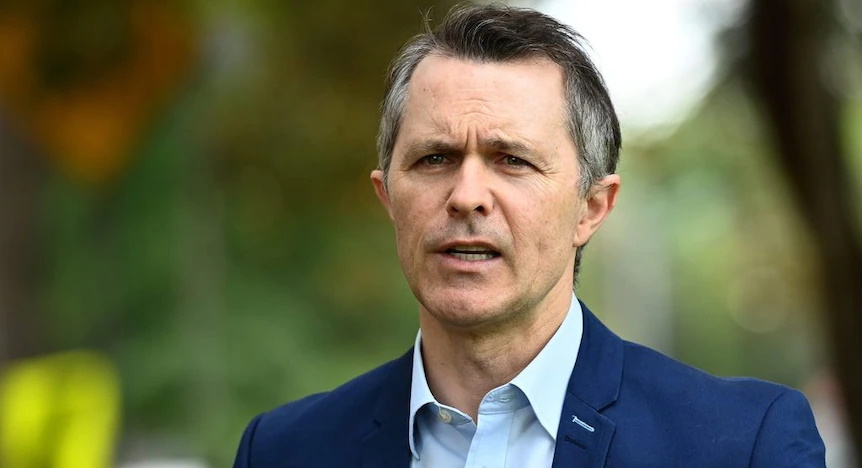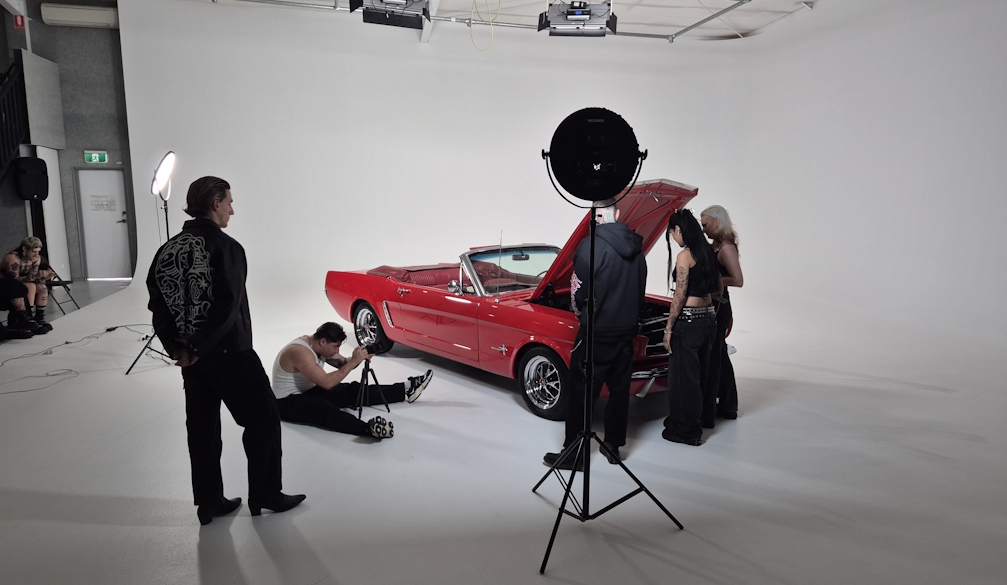Will Australia’s media do better at cracking down on lies this election? The signs aren’t good
- Written by Denis Muller, Senior Research Fellow, Centre for Advancing Journalism, The University of Melbourne

Populism uses the freedoms of democracy against democracy. In particular, populists use freedom of speech to promote hate, incite prejudice, intensify social division and spread lies.
At the same time, freedom of speech is indispensable to the functioning of democracy. Among other things, it is the means by which the institution of the media is expected to inform people, provide a forum for the exchange of ideas, and hold the powerful to account.
This places the media at the centre of any test of democratic institutional capacity and resilience. The test is most acute at election time.
So, will the Australian professional mass media pass this test at the forthcoming election?
Patterns of coverage
The Australian commercial media, led by its newspapers, go into this election ideologically polarised.
This is caused, in part, by intensified concentration of ownership. It’s also partly due to the more polarised social and political environment in which they now operate.
Until the early 1970s, on politics Australia’s media barons generally spoke with one voice: they supported the Liberal and National parties. Between 1943 and 1972, Australia’s major newspapers[1] gave the conservative side of politics 152 election-time endorsements to Labor’s 14.
At that time, Australia had five major newspaper companies. Today, thanks to a series of mergers and takeovers, there are two main newspaper groups.
The result is that News Corp controls roughly 60%[2] of daily circulation and Nine just over 20%.
Meanwhile, the Sydney Morning Herald shed its cast-iron conservatism. It became, like The Age, a slightly left-leaning newspaper. The Australian in its early days also had a liberal outlook.
Since then, however, The Australian, and News Corp as a whole, have become more like outright propagandists for the Liberal-National parties and less like conventional news providers[3]. This was seen, in particular, at the federal elections of 2016, 2019 and 2022.
Into the ground slightly to the left of these two dominant players has ridden the Guardian Australia with its online-only presence and its strict policy of separating news from opinion.
This stands in stark contrast to the explicit editorial policy[4] of News Corporation, which authorises[5] its journalists to write their news stories in such a way as to make it clear to the reader the newspaper’s own opinion of the matter.
These ideological contours have not changed. Australia can expect to see similar patterns of coverage in 2025 very similar to those of 2016, 2019 and 2022.
These patterns fundamentally influence the priority accorded to particular stories, as well as the language used in portraying the issues and people involved. The prominence and type of display given to them is also affected.
Does it still matter what newspapers do in their election coverage?
Unequivocally, yes.
The latest newspaper cross-platform (print and digital) readership data[7] from Roy Morgan Research, covering the 12 months to September 2024, shows 21.8 million Australians accessed these news sources monthly, and 18.4 million weekly.
And 93%[8] of these readers read the “general news” category of content, which includes election coverage.
And for all their cutbacks in journalistic capacity, it is still the newspapers that inject the most new journalistic material into the 24/7 news cycle.
At the same time, free-to-air television remains the most commonly used source of news for Australians (26%[9]), followed by 23%[10] who use online news websites or apps as their primary source.
Among 18-24-year olds, however, the picture is very different. About 46%[11] gave social media as their main source of news. Roughly one-third of them said celebrities and social media influencers were their sources of news.
3 key questions
Three questions are suggested by these facts.
- how trusted are professional mass media as a source of news compared with social media?
- how well-equipped are the free-to-air TV networks to supply an informative and fair election coverage?
- how do the professional mass media integrate election activity on social media into their own coverage?
On trust, a 2020 study[12] by Queensland University of Technology researchers found there are relatively high levels of trust in well-established news brands, particularly the ABC and SBS.
It also found that among online platforms, only Guardian Australia, a relative newcomer, had established a significant trust reputation comparable to that of established news brands. It should be noted that The Guardian brought its pre-existing high reputation into this market. Otherwise, the study found, trust in news on social media platforms is considerably lower than for news on the sites of established news media organisations.
On the second question concerning free-to-air television coverage, history is not encouraging. Over the past three elections, commercial free-to-air TV reporters have been distinguished primarily by their propensity to ask “gotcha” questions. These are of limited public utility. Perhaps the celebrated response[13] of the Greens leader Adam Bandt to one of these – “Google it, mate” – may have dampened enthusiasm for them.
In fairness, however, the political parties keep such a stranglehold on the public appearances of their candidates that there is little opportunity for the travelling media to ask anything other than the most superficial questions.
As for integrating social media activity into professional news coverage, established news organisations should realise that the more they draw on social media content, the more they expose themselves to social media’s trust deficit.
All the same, democracy benefits from a well-founded integration of social media activity into professional mass media coverage. It has become an essential part of election coverage.
To date, however, the professional media have shown they have some way to go in accomplishing this without dumbing down the coverage or succumbing to trivia.
Less haste, more verification and independent calling out of lies would be a good starting point.
More people are avoiding the news
The 2024 Reuters Institute global Digital News Report[14] found a rise in selective news avoidance.
Across the nations surveyed, including Australia, on average about four in ten (39%) now say they sometimes or often avoid the news – up three percentage points on 2023’s average.
It seems to reasonable to suppose that the less people rely on news, the less reliable information they have on which to base their voting decisions.
A big question for all media is whether they have the resources and the will to crack down hard and quickly on lies – what is quaintly called disinformation.
Again, history is not encouraging. During the Voice to Parliament referendum campaign, a range of lies was allowed to proliferate while the media as a whole was generally content to indulge in a “he said, she said” response.
This is no longer good enough. Without a swift and independent media response based on fact-checking, lies become embedded. They gain the status of equivalence with the attempted repudiations.
A formidable challenge
Taken together, ideological polarisation, pressure on resources, the difficulties imposed by parties’ tight control of access to candidates and immature editorial practices add up to a formidable challenge to the commercial media going into this election.
The ABC has challenges of its own. It has shown itself to be hyper-sensitive to external political pressure, whether from parties, lobbyists or News Corp.
The election campaign gives it an opportunity not just to sustain the high levels of public trust it has always enjoyed but to demonstrate to its own journalists that the organisation has their backs when they come under attack.
The new chair, Kim Williams, has shown himself to be an interventionist where content is concerned. He outlined what was in effect a manifesto for what he called the renewal of the ABC in an address to the National Press Club[15]. He later went into some detail about his vision for Radio National. It will be interesting to see what role, if any, he plays in influencing election coverage, particularly given the fact that the managing director and editor-in-chief[16], Hugh Marks, has no journalistic credentials.
How all these factors play out will be evidence of the capacity of Australia’s media to play its part in protecting the nation’s democracy from the worst effects of populism.
References
- ^ Australia’s major newspapers (theconversation.com)
- ^ roughly 60% (reutersinstitute.politics.ox.ac.uk)
- ^ less like conventional news providers (theconversation.com)
- ^ explicit editorial policy (theconversation.com)
- ^ authorises (www.theaustralian.com.au)
- ^ AAP Image/Rob Blakers (photos.aap.com.au)
- ^ data (roymorgan-cms-prod.s3.ap-southeast-2.amazonaws.com)
- ^ 93% (roymorgan-cms-prod.s3.ap-southeast-2.amazonaws.com)
- ^ 26% (www.acma.gov.au)
- ^ 23% (www.acma.gov.au)
- ^ 46% (www.acma.gov.au)
- ^ study (research.qut.edu.au)
- ^ response (www.youtube.com)
- ^ Digital News Report (reutersinstitute.politics.ox.ac.uk)
- ^ address to the National Press Club (www.abc.net.au)
- ^ managing director and editor-in-chief (www.abc.net.au)




















